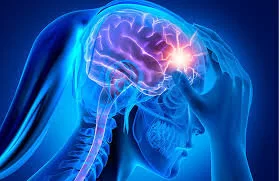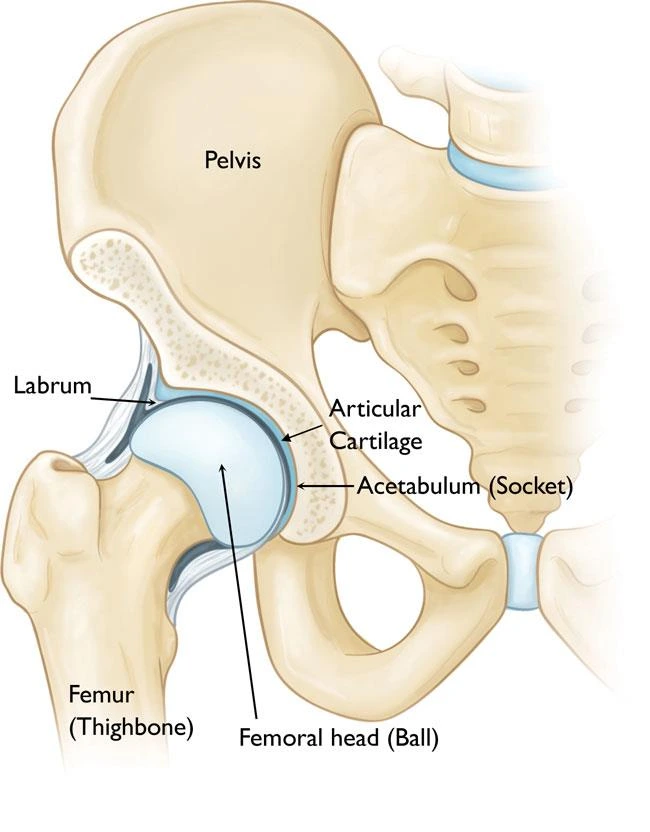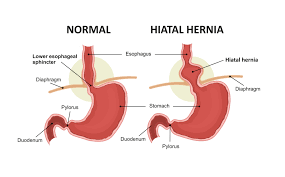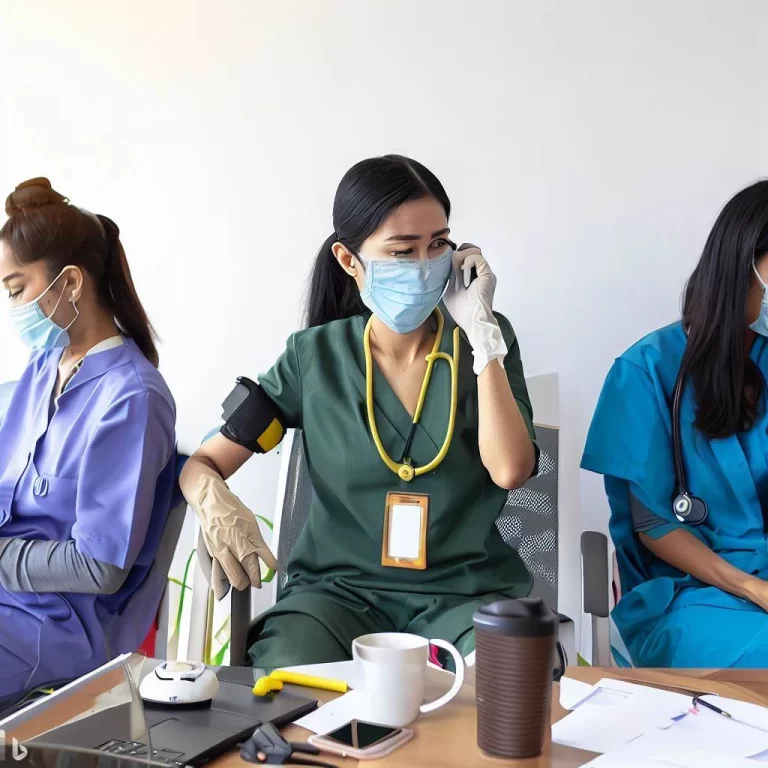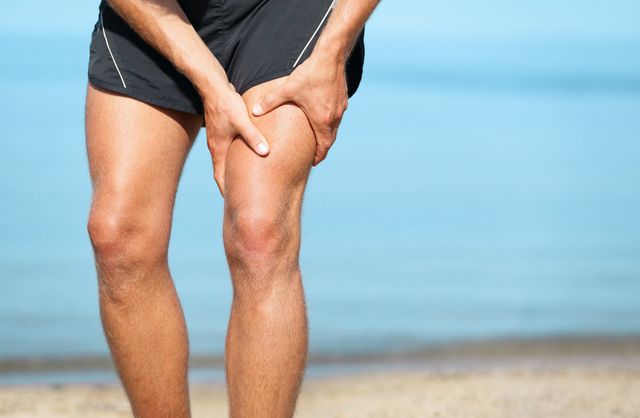Migraine
Table of Contents
What Is Migraine?
Migraine is a neurologic disorder that frequently causes a strong headache. The headache happens in episodes and sometimes also arrives with nausea, vomiting, and sensitivity to light.
A migraine episode is a type of headache. An episode generally happens in stages and may last for a few days. Severe cases may affect a person’s regular life, incorporating their ability to work or study.
Migraine may affect individuals in various ways, and the triggers, severity, symptoms, and frequency may differ. Some individuals have more than 1 episode each week, while others have them only occasionally.
Difference between migraine and headache
A migraine episode varies from a typical headache. The experience is different, and they may have various causes. Writing down the symptoms and when they happen may help a person and their doctor identify migraine episodes. Keep this journal for at least eight weeks, and note down:
- The time that symptoms start.
- Possible triggers, like stress or menstruation.
- The nature of the headache.
- Any other symptoms?
- How long do the symptoms last?
- Any noticeable indicators of migraine, like an aura.
- Any medications and their effects.
Both tension headaches and migraine may have:
- Mild-to-moderate pain
- A steady ache
- Pain on both sides of the head
Only migraine may have these symptoms:
- Moderate-to-severe pain
- Pounding or throbbing
- An inability to do your usual activities
- Pain on one side of the head
- Nausea with or without vomiting
- An aura
- Sensitivity to light, sound, or both
Prevalence
- Migraine headaches are the 2nd most usual kind of primary headache.
- Approximately 28 million individuals in America (about 12% of the people) will experience migraine headaches at some point.
- Epidemiological research has documented its high prevalence and high socioeconomic and personal impacts.
- Lifetime prevalence is eighteen percent for females and 6% for males in the US.
- It most usually starts at the time of puberty or young adulthood, waxing and waning in frequency and severity over the ensuing years and generally diminishing after age fifty.
- About forty-five cases of migraine emerge at the time of childhood or adulthood.
- A migraine with aura is more obvious to produce at an earlier age than a migraine without aura.
- In 90% of migraines, the 1st attack usually generates before the age of forty years.
- In females, the frequency of headaches is highest at the time of their reproductive years, when estrogen levels are higher, and decreases to some extent after menopause.
What does a migraine feel like?
Individuals describe migraine pain as:
- Pulsating
- Throbbing
- Perforating
- Pounding
- Debilitating
- It may also experience severe, dull, steady aches.
- The pain can begin out as mild.
- But without any kind of treatment, it may become moderate to severe.
- Migraine pain most usually affects the forehead area.
- It is generally on one side of the head, but it may happen on both sides or shift.
- Most migraine attacks last about four hours.
- If they are not treated or do not respond to treatment, they may last for as long as seventy-two hours to a week.
- In a migraine with aura, pain can overlap with an aura or can never happen at all.
Migraine symptoms
Migraine symptoms can initiate 1 to 2 days prior to the headache itself. This is known as the prodrome stage. Symptoms during this stage can include:
- Food cravings
- Depression
- Fatigue or low energy
- Frequent yawning
- Hyperactivity
- Irritability
- Neck stiffness
In migraine with aura, the aura happens after the prodrome stage. At the time of an aura, a person can have problems with vision, sensation, movement, and speech. Examples of these problems involve:
- Difficulty speaking clearly
- Experiencing a prickling or tingling sensation in the face, arms, or legs
- Seeing shapes, light flashes, or bright spots
- Temporarily losing your vision
The next phase is identified as the attack phase. This is the most acute or severe of the phases when the actual migraine pain takes place. In some individuals, this may overlap or happen at the time of an aura. Attack phase symptoms may last anywhere from hours to days. Symptoms of migraine may differ from person to person. Some symptoms can involve:
- Increased sensitivity to light and sound
- Nausea
- Dizziness or feeling faint
- Headache or Pain on any one side of the head (left side, right side, front, or back, or in the temples)
- Pulsing and throbbing head pain
- Vomiting
- After the attack phase, a person will frequently experience the postdrome phase.
- At the time of this phase, there are generally changes in mood and feelings.
- These can range from experiencing euphoria and being extremely happy to feel very fatigued and apathetic.
- A mild, dull headache can persist. The length and intensity of these phases may take place to different degrees in different people.
- Sometimes, a phase gets skipped, and a migraine attack may happen without causing a headache.
Migraine nausea
- Many individuals experience nausea as a symptom of migraine.
- Many also vomit. These symptoms can begin at the same time the attack does.
- Generally, though, they begin about one hour after the headache pain starts.
- Nausea and vomiting may be as troubling as the attack itself. If a person only has nausea, he can be able to take the common migraine medications.
- Vomiting, though, may prevent the person from being able to take pills or keep them in the body long enough to be absorbed.
- If a person has to delay taking migraine medication, migraine is likely to become more severe.
Migrainous Infarction
- One or more migrainous aura symptoms connected with an ischaemic brain lesion inappropriate territory demonstrated by neuroimaging.
Migraine-triggered Seizure
A seizure triggered by a migraine aura. The causes are:
- Most usual causes involve: Vasodilators (eg, Nitroglycerin)
- Skipping meals
- Weather changes
- Sleep deprivation
- Stress
Excessive afferent stimuli (eg, flashing lights, strong odors)
Head trauma, Neck pain, or temporomandibular joint dysfunction may trigger or exacerbate a migraine.
What causes migraine attacks?
Researchers have not identified a definitive cause for migraine. But they still believe the condition is because of “abnormal” brain activity that affects nerve signaling, chemicals, and blood vessels in the brain. There are too many migraine triggers that are continually reported, involving:
- Bright lights
- Severe heat, or other extremes in weather
- Dehydration
- Changes in barometric pressure
- Hormone changes in individuals assigned female at birth, such as estrogen and progesterone fluctuations at the time of menstruation, pregnancy, or Menopause
- Excess stress
- Loud sounds
- Intense physical activity
- Skipping meals
- Changes in sleep patterns
- Use of certain medications, namely oral contraceptives or nitroglycerin
- Unusual smells
- Certain foods
- Smoking
- Alcohol use
- Traveling
- If a person experiences a migraine attack, the doctor can ask the person to keep a headache journal.
- Writing down what a person was doing, what foods a person ate, and what medications a person took before the migraine attack began may help identify the triggers.
Migraine types
There are many types of migraine. 2 of the most usual types are migraine without aura and migraine with aura. Some individuals have both types. Many individuals living with migraine have more than one type of migraine.
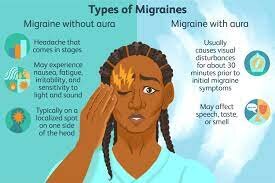
Migraine without aura
Most individuals with migraine do not experience an aura with their headaches. People who have migraine without an aura have had at least 5 attacks that have these characteristics:
- The attack generally lasts 4 to 72 hours without treatment or if treatment does not work attack has at least 2 of these traits:
- It happens only on one side of the head (unilateral)
- Pain is pulsating or throbbing
- Pain level is moderate or severe
- Pain gets worse when a person moves, like when walking or climbing stairs
- The attack has at least one of these traits:
- It makes a person sensitive to light (photophobia)
- It makes a person sensitive to sound (phonophobia)
- A person feels nausea with or without vomiting or diarrhea
- The attack is not caused by another health problem or diagnosis
Migraine with aura
An aura typically happens in 25 percent of individuals who have migraine. If a person has a migraine with aura, a person most likely has at least 2 attacks that have these characteristics:
- An aura that goes away, is completely reversible, and involves at least one of these symptoms:
- Visual problems (the most usual aura symptom)
- Sensory problems in the body, face, or tongue, like numbness, tingling, or dizziness
- Speech or language problems
- Problems moving or weakness, which can last up to 72 hours
Brainstem symptoms involve:
- Difficulty talking or dysarthria (unclear speech)
- Vertigo (a spinning feeling)
- Tinnitus or ringing in the ears
- Diplopia (double vision)
- Ataxia or an inability to control body movements
- Eye problems in only one eye, involving flashes of light, blind spots, or temporary blindness (when these symptoms happen, they are called retinal migraines)
An aura that has at least 2 of these traits:
- At least one symptom spread slowly over five or more minutes
- Each symptom of the aura lasts between five minutes and one hour (if a person has 3 symptoms, they can last up to three hours)
- At least one symptom of the aura is only on one side of the head, involving vision, speech, or language problems
- Aura happens with the attack or one hour prior to the attack starts
- The attack is not caused by another health problem and the transient ischemic attack has been excluded as a cause
- An aura generally happens prior to the headache pain begins, but it may continue once the attack starts. Alternatively, an aura can begin at the same time as the attack does.
Chronic migraine
- Chronic migraine used to be called a “combination” or “mixed” because it may have features of a migraine and a tension headache.
- It is also sometimes known as a severe migraine headache and may be caused by medication overuse.
- Individuals who have chronic migraine have severe tension headaches or migraine attacks more than fifteen days a month for three or more months.
- More than 8 of those attacks are migraine with or without aura.
- Some extra risk factors that can make an individual susceptible to chronic migraine include:
- Anxiety
- Depression
- Another type of chronic pain, like arthritis
- Other serious health problems (comorbidities), such as high blood pressure
- Previous head or neck injuries
- Acute migraine is a general term for a migraine attack that is not diagnosed as chronic. Another name for this form is episodic migraine.
- Individuals who have episodic migraine have attacks up to fourteen days a month.
- Thus, individuals with episodic migraine have fewer attacks a month than individuals with chronic ones.
- Vestibular migraine is also identified as migraine-associated vertigo.
- About one percent of the general population lives with vestibular migraine.
- The symptoms affect balance and cause dizziness or both. Individuals of any age, involving children, can feel vestibular migraine attacks.
- If diagnosed, the doctor can recommend a person see a vestibular rehabilitation therapist.
- They may teach the exercises to help the person stay balanced when the symptoms are at their worst.
- Because these migraine attacks may be so debilitating, Individuals and the doctor can talk about taking preventive medications.
- According to the National Headache Foundation, menstrual-related migraine affects up to sixty percent of females who experience any type of migraine. It may happen with or without an aura.
- Attacks may also occur prior to, at the time, or after menstruation and at the time of ovulation.
- Research has shown that menstrual migraine tends to be more intense, last longer, and have more significant nausea than migraine not connected with the menstrual cycle.
- A Migraine aura without headache also identifies as a silent migraine or visual migraine without headache, which happens when an individual has an aura but does not get a headache.
- This type of migraine is more usual in individuals who begin having migraines after age 40.
- Visual aura symptoms are most usual. With this kind of migraine, the aura can slowly happen, with symptoms spreading over several minutes and moving from one symptom to another.
- After visual symptoms, individuals can have numbness, speech problems, and/or tingling in the face or hands.
- Hormonal migraine, or menstrual migraine, is linked with the women’s hormones, usually estrogen.
- Many individuals who ovulate report migraine headaches during:
- Their period
- Ovulation
- Pregnancy
- Perimenopause
Migraine in children
- Children may have many of the equal types of migraine as adults.
- Until they are older teens, children can be more likely to have symptoms on both sides of the head.
- It is rare for a small child to have headache pain in the back of the head.
- Their migraine attacks tend to last two to seventy-two hours.
- A few migraine variants are more usual in children.
- One of the more usual variants is abdominal migraine.
Abdominal migraine
Children with abdominal migraine can have a stomachache instead of a headache. The pain may be moderate or severe. Usually, pain is in the middle of the stomach, around the belly button. But the pain can not be in this particular area. The belly can just feel “sore.” The child can also experience headaches. Other symptoms may involve:
- Lack of appetite
- Nausea with or without vomiting
- Sensitivity to light or sound
- A small child who has abdominal migraine is likely to produce more typical migraine symptoms as an adult.
Migraine attacks and pregnancy
For many pregnant women, their migraine attacks increase at the time of pregnancy. But they can become worse following delivery because of sudden hormonal shifts. Attacks at the time of pregnancy require special attention to be sure that the cause of the attack is understood. Research is ongoing, but a recent little study showed that females with migraine at the time of pregnancy experienced a higher rate of having:
- Preterm or early delivery
- Pre-eclampsia
- A baby born with a low birth weight
- A few migraine medications can not be considered safe at the time of pregnancy.
- This may involve aspirin.
- If a person has a migraine at the time of pregnancy, work with the doctor to find ways to treat the migraine that won’t harm the developing baby.
Medication overuse headache
- The rare and recurring use of migraine medication may sometimes cause what is known as medication overuse headache (Before called a rebound headache).
- When determining how to deal with migraine, talk with the doctor about the frequency of the medication intake.
- Also, be sure to discuss alternatives to medications.
Hormonal factors
- Irregular estrogen levels are a potent migraine trigger.
- Many females have the onset of migraine at menarche, and severe attacks at the time of menstruation (menstrual migraine: appears to be more often in migraine with aura and, worsening migraine at the time of menopause.
- Oral contraceptives and other hormone therapy occasionally trigger or worsen migraine and have been connected with stroke in females who have migraine with aura.
- Pregnancy may either exacerbate or relieve migraine attacks.
- Certain foods may precipitate a migraine attack (involving, but not limited to):
- Tyramine-containing cheeses.
- Meat, like hot dogs or bacon, with nitrate preservatives.
- Chocolate contains phenylethylamine but not chocolate alone.
- Food additives like monosodium glutamate, a commonly used flavor enhancers.
- Coffee and alcohol (specifically red wine)
- high or low Sugar (in vulnerable people)
Genetics
- There is a positive family history of migraine in about 60% of cases, which recommends a hereditary factor.
- All twin studies perform so far (comparison of concordance rates between monozygotic and dizygotic twins) show that migraine has a genetic component in addition to environmental factors.
- Familial hemiplegic migraine (FHM), an infrequent type of migraine with aura, is the only form in which a monogenic mendelian mode of inheritance has been clearly established.
Associated Co-morbidities
Allergies
- It was identified that there were differences in the number of positives for IgG food allergens between people with migraine and a controlled group, elimination diets successfully control the migraine without the requirement of medications.
Ménière’s Disease
- Migraine happens more frequently in patients diagnosed with Ménière’s disease.
Systemic Lupus Erythematosus
- Systemic Lupus Erythematosus (SLE) is one of the most usual co-morbidities of migraine headaches.
Epilepsy
Although studies vary, individuals with either migraine or epilepsy are more than twice as likely to have some other disorder. 5 Possible causes for comorbid:
- Migraine could cause epilepsy by incorporating brain ischemia and injury.
- Epilepsy could cause migraine by initiating the trigeminovascular system, in which we would expect an excess risk of migraine after, but not prior, the onset of epilepsy.
- Shared environmental risk factors due to the risk of migraine are significantly improved in an individual with idiopathic or cryptogenic epilepsy, known environmental risk factors cannot account for all of the comorbidity.
- Shared genetic risk factors can account for comorbidity.
- Ottman and Lipton proposed that an altered brain state (improved excitability) might improve the risk of both migraine and epilepsy and account for comorbidity, a hypothesis that draws support from therapeutic similarities.
Stroke
- The migraine-stroke association is most apparent for young females with migraine with aura.
- Although there are several hypotheses about the biological link between migraine with aura and ischemic stroke, the precise mechanisms remain unclear.
- Although, because the absolute risk of stroke is low in patients with migraine with aura, and migraine without aura is likely not associated with ischemic stroke, most migraine patients will not experience a stroke event.
- According to large series, migrainous infarct accounts for 0.5-1.5% of all ischaemic strokes and 10-14% in young patients.
- Migraine itself can cause spasms or even hyperplasia.
- It is unlikely to be the cause of embolism or other disorders. dissection.
- Migrainous infarct because of severe hypoperfusion at the time of an attack is infrequent and mostly includes the posterior-cerebral-artery territory and is more usual at the time of attacks of migraine with aura than without aura.
- The precise mechanism of this severe hypoperfusion is not really known.
- Improved risk because of treatments used in migraine, particularly vasoconstrictors, is supported by the increase in white-matter abnormalities and in mortality found in patients taking ergotamine, but 2 recent studies found no improvement in severe vascular events with triptans.
- Drugs widely used in migraine, like aspirin and non-steroidal anti-inflammatory drugs, reduce the risk of cerebral ischaemic events.
Migraine headache may happen as a comorbidity of ischaemic stroke, carotid or vertebral artery dissection, arteriovenous malformations, cerebral autosomal dominant arteriopathy with subcortical infarcts and leukoencephalopathy (CADASIL syndrome), or platelet disorders (eg, thrombocytosis).
Migraine triggers
While migraine attack triggers may be very personal, certain foods or food ingredients can be more likely to trigger an attack than others. These may involve:
Alcohol or caffeinated drinks
- Food additives, such as nitrates (a preservative in cured meats), aspartame (an artificial sugar), or monosodium glutamate (MSG)
- Tyramine, which happens naturally in some foods
- Tyramine also improves when foods are fermented or aged.
- These involve foods such as some aged cheeses, sauerkraut, and soy sauce.
- But ongoing research is looking more closely at the role of tyramine in migraines, as it can not be as big of a trigger as previously thought.
Other migraine attack triggers may be varied and seem random:
- Hormone triggers in individuals assigned female at birth
- Stress
- Anxiety
- Excitement
- Poor sleep quality
- Strenuous exercise (if a person does not do it frequently)
- Bright lights
- Changes in climate
- Hormone replacement therapy drugs
- Keeping a journal of when the migraine attacks happen may help a person identify the personal triggers.
How is migraine diagnosed?
Doctors diagnose migraine by listening to the symptoms, taking a thorough medical and family history, and performing a physical exam to find out other potential causes. Imaging scans, such as a CT scan or MRI, may find out other causes, involving:
- Tumors
- Abnormal brain structures
- Stroke
Migraine treatment
Migraine may not be cured, but the doctor may help a person manage migraine attacks by giving a person the tools to treat symptoms when they happen, which can lead to fewer attacks in general. Treatment may also help make migraine less severe.
The treatment plan is based on:
- The age
- How frequently a person has migraines attacks
- The type of migraine a person has.
- How severe they are — depends on how long they last, how much pain a person has, and how frequently they keep a person from going to school or work
- whether they involve nausea or vomiting, as well as other symptoms
- other health conditions a person can have and other medications a person can take.
The treatment plan can involve a combination of:
- Lifestyle adjustments, involve stress management and avoiding migraine triggers.
- OTC pain or migraine medications, such as Nonsteroidal anti-inflammatory drugs (NSAIDs) or acetaminophen (Tylenol).
- Prescription migraine medications that a person takes every day help prevent migraine headaches and decrease how frequently a person has headaches.
- Prescription migraine medications that a person takes as soon as an attack initiates to keep it from becoming severe and to ease symptoms.
- Prescription medications to help with nausea or vomiting.
- Hormone therapy if migraines seem to happen in relation to the menstrual cycle.
- Counseling.
- Alternative care can involve meditation, acupressure, or acupuncture.
Medication
Medications may be used to either prevent a migraine attack from happening or treat it once it happens. A person can be able to get relief with OTC medication. But if OTC medications are not effective, the doctor can decide to prescribe other medications. The severity of the migraine and any other health conditions a person has will determine which treatment is right for the treatment. Acute medications — taken as soon as a person suspects a migraine attack is coming — involve:
NSAIDs:
- These medications, such as ibuprofen or aspirin, are typically used in mild-to-moderate attacks that do not involve nausea or vomiting.
Triptans:
- These medications, such as sumatriptan, eletriptan, and rizatriptan, are typically the 1st line of defense for people who have nerve pain as a symptom of their migraine attacks.
Antiemetics:
- These medications, such as metoclopramide, chlorpromazine, and prochlorperazine, are typically used with NSAIDs to help reduced nausea.
Ergot alkaloids:
- These medications, such as Migranal and Ergomar, are not prescribed that frequently and are generally reserved for people who do not respond to triptans or analgesics.
Preventative medications :
- Prescribed to individuals whose migraine attacks may be debilitating or occurs more than 4 times a month — are taken once a day or every three months via injection.
- These medications involve:
Antihypertensives:
- These drugs are prescribed for high blood pressure and may also help with migraine attacks.
- Beta-blockers and angiotensin receptor blockers (candesartan) are a few examples of antihypertensive drugs used for migraine prevention.
Anticonvulsants:
- Certain anti-seizure medications can also be able to prevent migraine attacks.
Antidepressants:
- Some antidepressants, such as amitriptyline and venlafaxine, can also be able to prevent migraine attacks.
Botox:
- Botox injections are administered to the head and neck muscles every three months.
Calcitonin gene-related peptide treatments:
- These treatments are administered either via injection or through an IV and work to prevent a migraine attack from developing.
- If a person has nausea and vomiting, the doctor can recommend medication to reduce nausea called anti-nausea or antiemetic drugs.
- In this case, the antiemetic may help prevent vomiting and improve nausea.
- Acupressure can also be helpful in treating migraine nausea.
- A 2012 study showed that acupressure decreased the intensity of migraine-connected nausea initiated as soon as 30 minutes, gaining improvement over four hours.
Other treatment
Devices for migraine
- Surgery for migraine is not recommended, but some medical tools have been studied and endorsed for helping lessen migraine attacks by either reducing or increasing nervous system activity.
- Recently, the FDA has approved four neuromodulation treatments:
- single-pulse transcranial magnetic stimulator, a handheld device that produces a magnetic impulse that affects electrical signaling in the brain transcutaneous vagus nerve stimulator, a small, noninvasive tool that targets the vagus nerve in the neck via electrical stimulation transcutaneous supraorbital neurostimulator, a device that simulates the supraorbital nerves with electrical stimulation one or more-channel brain neuromodulation system, a headset that can target multiple nerves in the head
- Talk with the doctor about the best neuromodulation treatment for you and your specific type of migraine.
Treatment for children’s migraine
Recent approaches to the treatment of Pediatric migraines. The differential diagnosis for children is important for the perfect treatment. Diagnosing the cause of headaches in children may help decide what kind of treatment is appropriate. Children may come with any of the following conditions that can mask the true migraine with other symptoms that happen simultaneously or that may exacerbate migraine headache symptoms.
- Allergies and sinus disease
- Head Injury
- Obesity
- Sleep
- Psychological Factors
Physical Therapy treatment
- Research for the physical therapy treatment for migraine headaches is limited.
- Although, migraineurs may still benefit from physical therapy intervention.
- As mentioned in the clinical presentation, peri-cranial muscles may be the cause of migraine and will be tender at the time of migraine.
- There can also be changes in sub-occipital and paraspinal muscle tone and underlying cervical dysfunction among the migraine episodes.
- This may be addressed through physical therapy utilizing manual therapy, particular exercise training (incorporating, stretching, strengthening, and self-distraction), education, and modalities to reduce the frequency/onset of the attack and duration/intensity of the attack.
- A key systematic review showed that massage therapy, physiotherapy, relaxation, and chiropractic spinal manipulative therapy can be similarly efficient as propranolol and topiramate in the prophylactic management of migraine (many other studies may be accessed from the reference list of this open-access article).
- Some studies have described that physiotherapy is most effective for the treatment of migraine when combined with other treatments like thermal biofeedback, relaxation training, and exercise.
- Migraineurs may also react from physical therapy for vestibular-related dysfunction as seen in vestibular migraine.
- If the migraine is accompanied or caused by benign paroxysmal positional vertigo (BPPV), PT may assist in decreasing the frequency of attacks.
Spinal Manipulation
- Manual therapy techniques have been looking out to be effective as few drugs in the prophylactic management of migraine.
- It has also looked out to reduce pain intensity and decrease the number of days with migraine as well as working disability, and partly on the improvement of HRQoL.
- Cervical manipulation has been shown to be successful for a shorter period of treatment for migraine headaches, but precaution should be taken for the possible risk of vertebral artery dissection, stroke, or transient ischemic attack.
Modalities
- Cold therapy in the kind of frozen neck muffles at the applied onset of migraine headache targeting the carotid arteries at the neck significantly decreased recorded pain in participants with migraine headaches.
Exercise Therapy
- Exercise has been recommended as a means of migraine management.
- Exercise has also been found to be effective in decreasing the intensity of migraine headaches, but it does not give a significant reduction in the frequency or duration of migraine attacks.
- More research is needed regarding the value of exercise for the treatment of migraine headaches.
Thermal Biofeedback and Neurofeedback
- Neurofeedback and biofeedback literature is improving with positive outcomes for the treatment of migraine headaches.
- Neurotherapy is a broad term referring to the many kinds of biofeedback utilize to deliver information about the central nervous system which includes blood flow, thermal output from the brain, or electrical activity.
- Neurofeedback (also known as neuro biofeedback or EEG biofeedback) generally refers to frequency-based biofeedback that uses an EEG to give clients information about their brainwaves and slowly and subtly teaches individuals how to alter their brainwave activity.
- These techniques have enabled patients to automatically learn to abort their headaches without using any kind of neurofeedback device.
- These people described the biofeedback as helping them to gain the ability to better self-regulate by learning to control their EEG and reducing muscle tension, decreasing the rate of their breathing, and warming their hands and forehead, all of which were important for the types of biofeedback they had undergone.
- Home training has also been shown to be an important component of the efficacy and maintenance of treatment benefits.
- Treatment manuals incorporating home training led to nearly twenty percent higher treatment effects for headache reduction.
Lifestyle Modification
- One aspect of physical therapy that could be beneficial to migraine individuals could be education on better health, exercise, sleep, diet (a more in-depth look at diet requires to be identified by a registered dietitian), and relaxation techniques.
- Lifestyle modification suggestions gained consensus among physiotherapists on the most perfect management in patients who suffer from headaches Caffeine reduction, weight loss, and mindfulness are useful techniques for lifestyle modification.
Relaxation Techniques
- There is controversial proof of the effectiveness of migraine and relaxation techniques.
- However, an accountable amount of the literature supports RT as an adjunct treatment to the patient’s current medical management for their headaches.
Acupuncture
- Acupuncture has been shown to have equal efficacy as compared with continuous treatment with standard drug therapy and is also effective for long-lasting effects and reduced intake of medication.
Massage
- Massage therapy may have beneficial effects on migraine experience, stress arousal, and sleep for people with migraine.
- Most notably, massage therapy has been shown to significantly decrease migraine frequency both at the time of the six weeks of massage therapy as well as at the time of the three weeks following the end of therapy.
- This is the 1st evidence that massage therapy can decrease migraine frequency beyond the end of treatment, and research is now required to further know the durability of these effects.
FAQ
A migraine is generally a moderate or severe headache experience as a throbbing pain on one side of the head. Many individuals also have symptoms like feeling sick, being sick, and increased sensitivity to light or sound. Migraine is a usual health condition, affecting around one in every five females and around one in every 15 men.
Research recommends that the answer is yes. Migraines may cause lesions, which are areas of damage to the brain.
Migraine is a highly prevalent and disabling neurological disorder that is generally linked with a broad range of psychiatric comorbidities, specifically among subjects with migraine with aura or chronic migraine.
Stress is a usual trigger of tension-type headaches and migraine. It may also trigger some other types of headaches or make them worse. Stress is a particularly usual headache trigger in children and young adults.
Usually, a lack of sleep is known to trigger headaches and migraines in some individuals. In a large study of migraine sufferers, 50% said sleep disturbances contributed to their headaches. And those who slept only 6 hours a night on average had more often and more severe headaches than those who slept longer.

